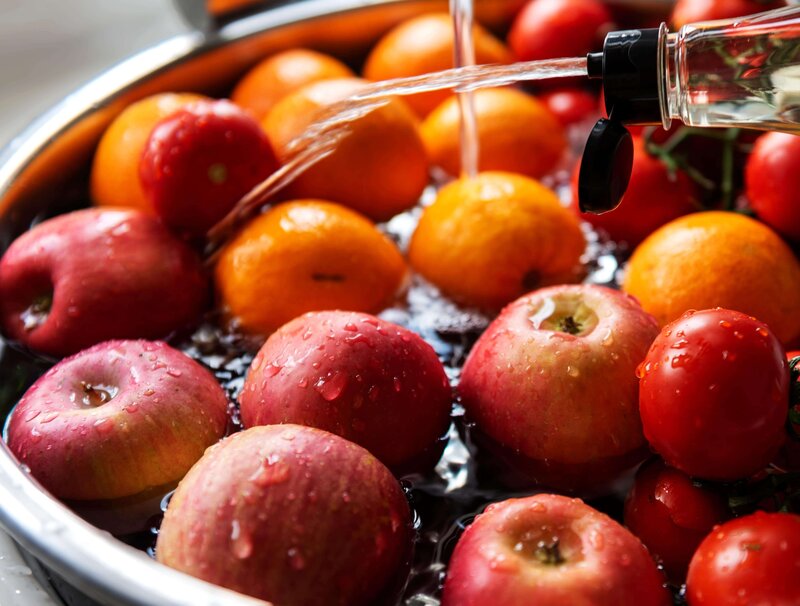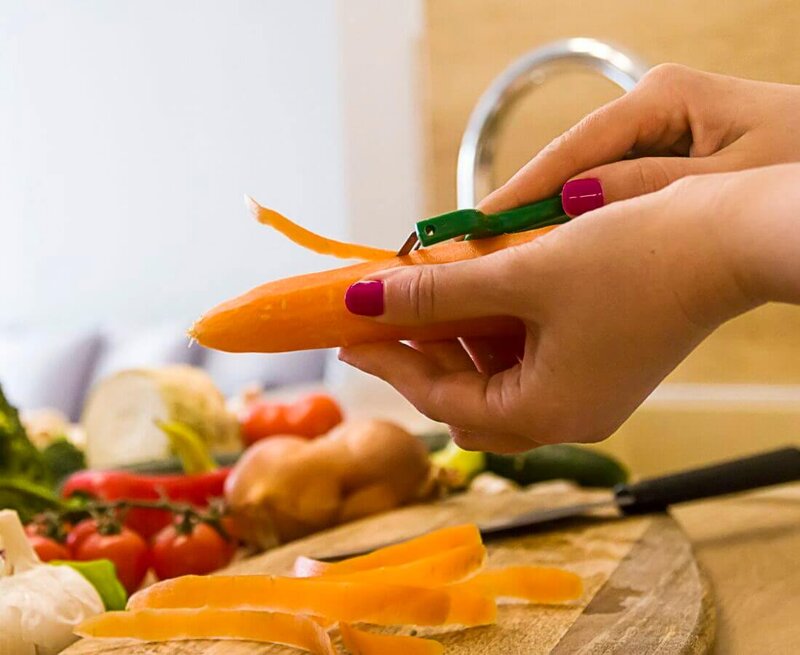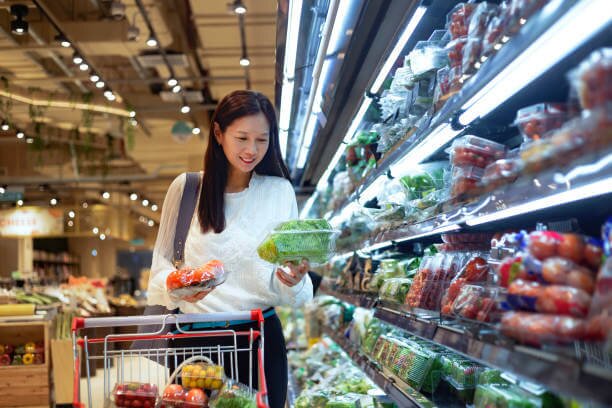- Shop
- Learn

Posted By: Truly Free Home
|
Posted On: 6/6/2024
Hi there! Have you ever thought about how many chemicals might be hiding on your favorite fruits and veggies? You're not alone. The good news is you can easily handle this problem at home. Let’s explore some proven methods to get rid of those stubborn pesticides.
Washing fruit isn't just about getting rid of dirt; it's also about removing harmful residues from pest control. Whether it's apples, broccoli, or berries, each type of produce has its own cleaning needs.
We've all heard the advice to wash our fruits and veggies before eating, but have you ever wondered if a quick rinse under the tap is really enough to remove pesticides? I have. As someone concerned about minimizing exposure to harmful chemicals, I’ve done a lot of research. And while washing produce is important, there’s more to it than just running it under water.
Research indicates that washing fruits and vegetables with plain tap water can remove some pesticide residues, but it’s not completely effective. On average, washing with water can reduce pesticide residues by about 25-50%, depending on the produce and the pesticide used. The variation is due to factors like how soluble the pesticide is, the texture of the produce, and how recently the pesticide was applied.
In my experience, the best way to wash fruits and vegetables is to spray them with a non-toxic fruit & veggie wash, then rinse them under running water while rubbing the surface with your hands. This helps remove more pesticide residues than just soaking. For firm-skinned produce like apples or potatoes, I use a clean brush to scrub them. And even if you plan to peel something, wash it first to prevent transferring pesticides or bacteria from the surface to the inner flesh.

For other alternatives for pesticide-removal, try adding baking soda or vinegar to your washing routine. If a non-toxic fruit & veggie wash is not available to you, you can also try these common kitchen items to aide in breaking down pesticide residues.
To make a baking soda wash, mix 1 teaspoon of baking soda with 2 cups of water. Soak your fruits and veggies in this solution for 5-15 minutes, then rinse thoroughly with plain running water. The baking soda helps break down some pesticides, making them easier to remove. One study found that soaking apples in a baking soda solution removed up to 80% of the pesticides thiabendazole and phosmet, compared to 50% with tap water alone.

For a vinegar wash, mix 1 part white vinegar with 3 parts water (e.g., 1 cup of vinegar with 3 cups of water). Soak your produce in this solution for 5-15 minutes, then rinse well with plain water. The acetic acid in vinegar helps dissolve some pesticide residues. However, vinegar can affect the taste or texture of some fruits and vegetables, so use it carefully.
Soaking vs spraying fruit and vegetables
Soaking produce in a baking soda or vinegar solution is effective, but some studies suggest that spraying the solution directly onto fruits and vegetables and then rubbing the surface can remove even more pesticide residues. This method ensures the solution directly contacts the skin of the produce. After spraying and rubbing, rinse thoroughly under running water to remove any remaining residues.
Besides baking soda and vinegar, there are other methods to try for removing pesticides from your fruits and veggies. Some of these might surprise you.
Soaking produce in a salt water solution (about 1 teaspoon of salt per cup of water) for 5-15 minutes followed by a thorough rinse can help remove some pesticide residues. The salt helps break down and loosen the pesticides. This method works well for heartier fruits and vegetables like carrots, potatoes, and apples. Be sure to rinse well afterward to remove any lingering saltiness.
Some people wash their fruits and veggies with a small amount of dish soap to help remove pesticides. While this can be effective, many experts advise against it since dish soaps aren't meant for food and may leave harmful residues. If you use soap, choose a mild, unscented variety and rinse thoroughly afterward. Personally, I stick with baking soda or vinegar to be safe.
Washing produce with hot water (around 105-140°F or 40-60°C) can be slightly more effective at removing certain pesticide residues compared to cold water. The heat helps break down the chemicals more quickly. However, hot water can also cause some fruits and vegetables to wilt or soften, affecting their quality and shelf life. Use hot water sparingly and only for produce that can handle the heat, like root vegetables.
If washing alone doesn’t give you peace of mind, you might wonder if peeling your fruits and veggies is a better way to remove pesticides. The answer is: it depends.

For produce with soft, edible skins like apples, peaches, and tomatoes, peeling can remove some additional pesticide residues that washing alone may miss. Many pesticides are designed to penetrate into the flesh, not just stay on the surface. However, peeling also means losing valuable nutrients and fiber in the skins. Whenever possible, I prefer to thoroughly wash and eat the skins to get the full nutritional benefits.
Some fruits and vegetables have skins we don’t typically eat and are more likely to have higher concentrations of pesticide residues. These include bananas, oranges, avocados, melons, and squash. Peeling these before eating is a good way to reduce pesticide exposure. Just make sure to wash them before peeling, as chemicals can transfer from the peel to the flesh when you cut into them.
Even if you plan to peel a fruit or vegetable, it’s important to wash it first. This is where your Non-Toxic Fruit & Veggie Wash comes to the rescue.
When you cut into unwashed produce, any pesticides or bacteria on the surface can transfer to the inner flesh by the knife. I always wash my fruits and veggies under running water, rubbing the surface with my hands, before peeling or cutting them. Then I give them a final rinse after peeling for good measure.
One way to reduce your exposure to pesticides is to choose organic produce whenever possible. But what exactly does "organic" mean, and are organic fruits and veggies really pesticide-free? Let’s break it down.
Organic produce is grown without most synthetic pesticides and fertilizers. However, organic farmers may still use certain approved pesticides derived from natural sources. The USDA organic seal indicates a product is at least 95% organic. So while organic produce generally has lower levels of synthetic pesticide residues, it may not be entirely pesticide-free.

While organic standards prohibit most synthetic pesticides, there are some exceptions. For example, substances like copper sulfate and pyrethrins are approved for use in organic farming. These pesticides, while naturally derived, can still leave residues on organic produce. The good news is that studies have found that organic produce has about 30% lower pesticide residues on average compared to conventionally grown fruits and vegetables.
Pros and cons of buying organic
Choosing organic produce can definitely reduce your exposure to synthetic pesticide residues. Organic fruits and veggies may also have slightly higher levels of certain nutrients and lower levels of heavy metals like cadmium. However, organic produce tends to be more expensive and may not be accessible to everyone. If you can't afford to go fully organic, I recommend prioritizing organic for the "Dirty Dozen" – the 12 fruits and vegetables that tend to have the highest pesticide residues when grown conventionally.
Proper washing is key to reducing pesticide residues on fruits and vegetables. I always spray my produce with Truly Free Fruit & Veggie Wash, then add water and scrub the surface with my hands or a clean brush.
Some fruits and vegetables tend to have higher levels of pesticide residues than others. The "Dirty Dozen" list, published annually by the Environmental Working Group (EWG), highlights the 12 fruits and vegetables with the most pesticide residues.
Whenever possible, I buy organic versions of these foods to reduce my pesticide exposure. The current Dirty Dozen includes strawberries, spinach, kale, nectarines, apples, grapes, peaches, cherries, pears, tomatoes, celery, and potatoes.
Eating a varied diet not only ensures you get a wide range of nutrients but can also help minimize your exposure to any one type of pesticide. Different crops are treated with various pesticides, so eating a diverse range of fruits and vegetables can avoid accumulating high levels of any single pesticide. I try to mix up my produce choices and include a rainbow of fruits and veggies in my meals.

By taking these steps to properly wash and prepare your fruits and vegetables, you can enjoy all the health perks of a produce-rich diet while minimizing your exposure to harmful chemicals. Happy munching.
So next time you're ready to enjoy a fresh apple or juicy strawberries, remember the steps we discussed for removing pesticides from fruit. Whether you choose a baking soda soak or just a good fruit & veggie wash & scrub under running water, you'll be making healthier choices for yourself and your family.
The key takeaway? Consistent effort pays off significantly in reducing pesticide exposure without sacrificing the taste or quality of your favorite fruits!

Truly Free Home is a non-toxic home cleaning and laundry product brand on a mission to free over 10 million homes from harmful toxic chemicals and excessive plastic waste.